
Imagine stepping into your backyard and being surrounded by lush greenery climbing up the walls, fragrant herbs within arm’s reach, and vibrant flowers creating a tapestry of color—without sacrificing an inch of space where the kids play. A vertical garden isn’t just about saving space; it’s about transforming your backyard into a dreamy, multi-functional haven where nature and family life blend seamlessly.
Many of us dream of a backyard that feels like an escape—a place for barbecues, morning coffees, or even a little homegrown produce. But reality often looks a little different. Between the kids’ trampoline, the outdoor furniture, and that ever-growing collection of bikes, things can start to feel cluttered rather than cozy. A vertical garden is the secret weapon you didn’t know you needed. It adds structure, beauty, and function to any backyard, whether you have a sprawling lawn or a compact patio.
But where do you start? How do you make sure a vertical garden works with your family-friendly backyard rather than just looking like a Pinterest dream that never quite translates to real life? The key is blending greenery into your existing space in a way that enhances both aesthetics and practicality.
1. Turn a Fence into a Living Garden Wall
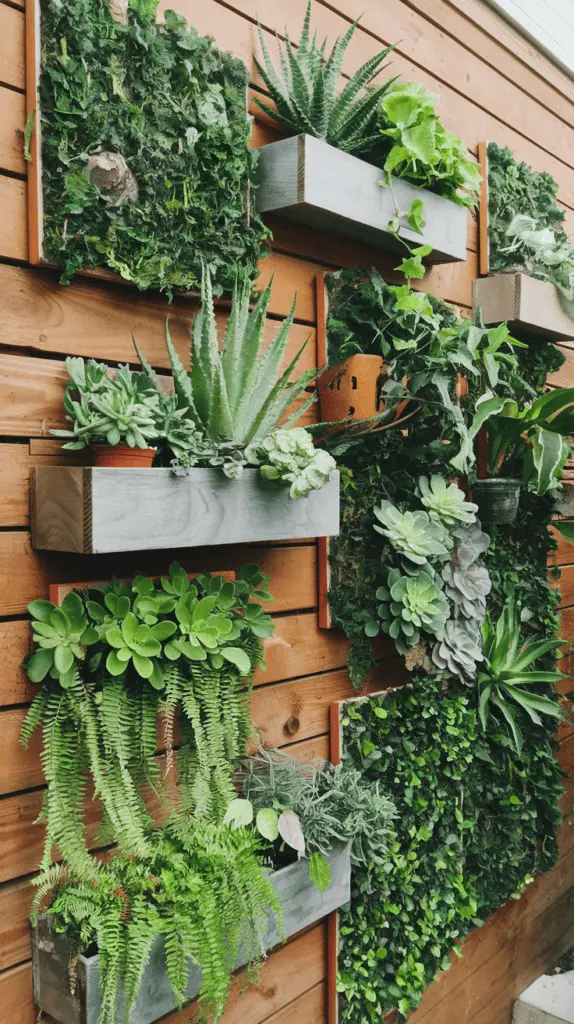
If your backyard has a fence, you’re already halfway to a stunning vertical garden. Instead of leaving it bare or just painting it a neutral color, transform it into a lush, living masterpiece. Attaching planters, trellises, or wall-mounted pots can instantly bring a dull fence to life, turning it into a focal point rather than just a boundary.

For a backyard with kids, consider using sturdy, shatterproof planters filled with edible plants like strawberries, cherry tomatoes, or even herbs. Not only does this make gardening fun for little ones, but it also means they can grab a snack while playing outside—an instant win for busy parents. If you want something low-maintenance, succulents and trailing vines make for a stunning display without demanding too much attention.
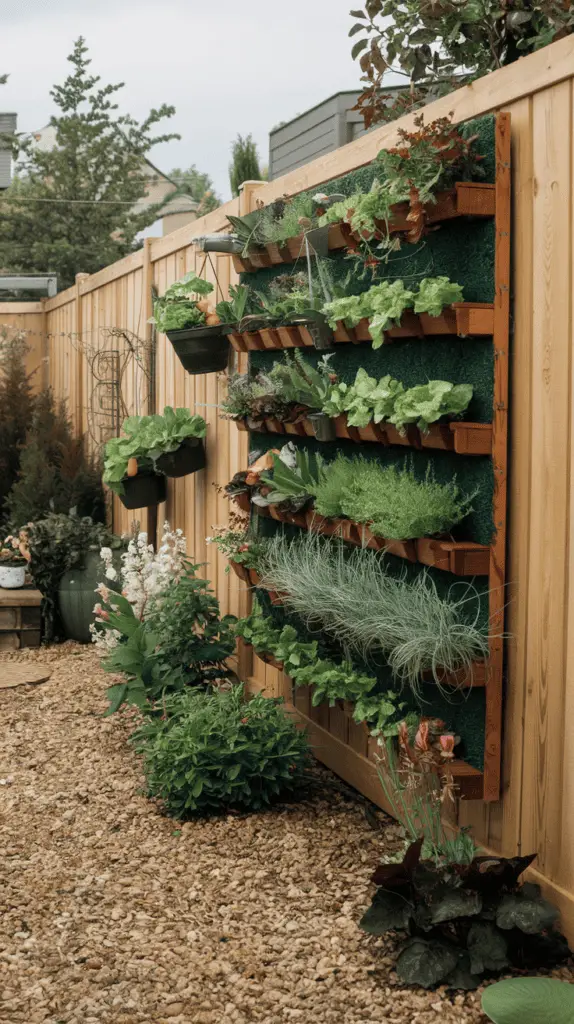
To take it up a notch, mix materials. A wooden fence adorned with black metal planters adds contrast, while a white-painted fence with vibrant greenery creates a fresh, modern look. A fence garden also works wonders for small backyards, where ground space is precious but vertical space is untapped potential.
2. Create a Cozy Patio Corner with Hanging Planters

A patio should be a space where your family can unwind, whether it’s for morning coffee or an evening barbecue. But if your patio feels more like an afterthought than an oasis, hanging planters can instantly elevate the atmosphere.

Suspending plants from pergolas, hooks, or even sturdy ceiling beams helps create a lush, intimate feel without taking up valuable floor space. Go for cascading greenery like ivy, ferns, or trailing petunias for a soft, dreamy aesthetic. If you love the idea of growing your own food, hanging baskets with strawberries, mint, or cherry tomatoes add a practical touch while keeping plants out of reach from tiny, curious hands.
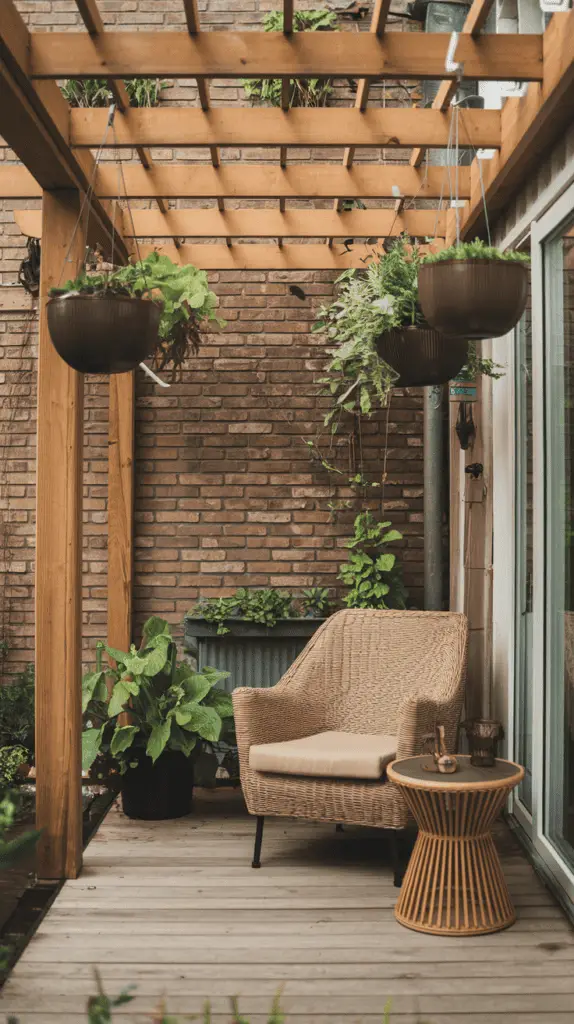
If your patio space is small, group planters at different heights to create visual interest without overwhelming the area. Macrame plant hangers can add a cozy, boho vibe, while sleek metal hooks give a more modern, minimalist feel. The key is balance—layering textures and colors to create a warm, inviting space that feels intentional rather than cluttered.
3. Frame Your Outdoor Dining Area with a Green Wall
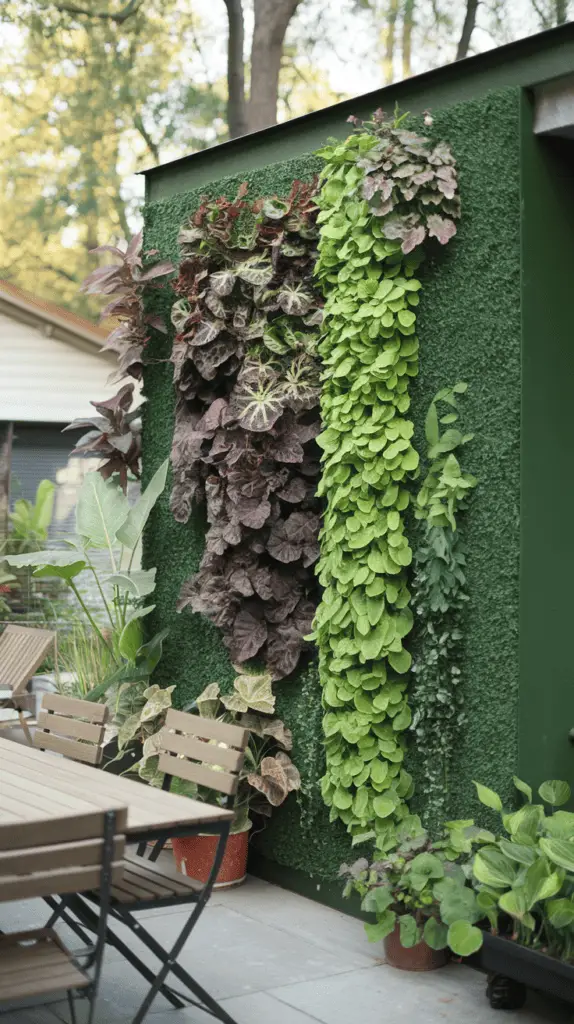
Outdoor dining is one of life’s greatest simple pleasures, whether it’s a casual weekend breakfast or a lively summer barbecue. But if your dining space lacks ambiance, a green wall could be the missing ingredient.
A plant-covered backdrop instantly transforms an ordinary table and chairs into a cozy retreat. Whether you go for a full-fledged vertical garden panel or a simple grid with climbing vines, the result is a space that feels lush and intimate.

For a practical yet beautiful touch, incorporate edible plants like basil, rosemary, and thyme into your green wall. It’s both functional and decorative, plus there’s something satisfying about plucking fresh herbs while cooking outdoors. If you want a year-round display, mix evergreen plants with seasonal blooms for a garden that evolves with the seasons.
Lighting also plays a huge role in setting the mood. String lights woven through a plant wall create a magical, fairy-tale effect, while soft lanterns tucked among the greenery add a warm, inviting glow. With the right setup, your outdoor dining area will become the heart of your backyard—somewhere your family naturally gathers to relax, chat, and enjoy great food.
4. Use a Trellis to Blend Greenery with Play Spaces
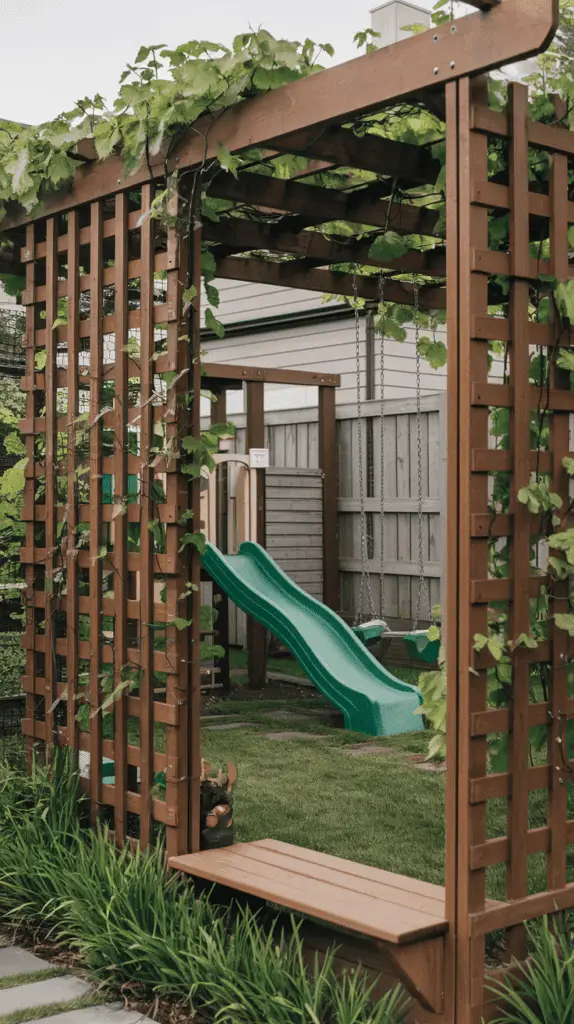
If your backyard is filled with play equipment, it’s easy to feel like it’s more of a mini theme park than a serene retreat. But instead of choosing between function and aesthetics, why not blend them together with a trellis garden?
A sturdy trellis covered in climbing plants can serve multiple purposes—it adds greenery, provides shade, and even acts as a natural divider between play zones and relaxation areas. Kids can run, climb, and play without the garden feeling too segmented, making it a win-win for the whole family.

For a low-maintenance option, consider fast-growing vines like morning glories, honeysuckle, or passionflowers. If you’re up for a more edible approach, grapevines or climbing beans add both beauty and function. Another fun idea is a “hidden fort”—a trellis with climbing plants surrounding a cozy nook where kids can read, play, or just enjoy a little secret hideaway.
By incorporating a trellis, your backyard keeps its playful energy while adding a layer of natural beauty. The best part? As the plants grow, the space evolves, making it feel more magical with each passing season.
5. Design a Vertical Herb Garden for Everyday Use
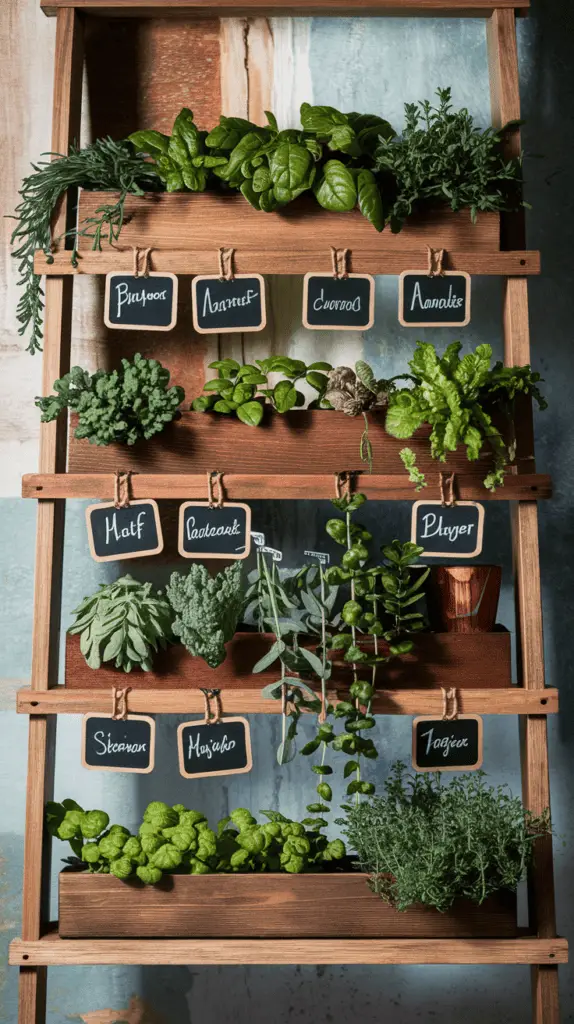
There’s something incredibly rewarding about growing your own herbs, and a vertical herb garden makes it easy to bring fresh flavors into your daily life without taking up valuable backyard space.
Whether you mount small planters on a wall, use a ladder shelf, or repurpose an old wooden pallet, a vertical herb garden is both a beautiful and practical addition to your backyard. It’s especially great for families who love cooking together—kids can have fun picking herbs for dinner, learning about different flavors, and even helping with watering duties.
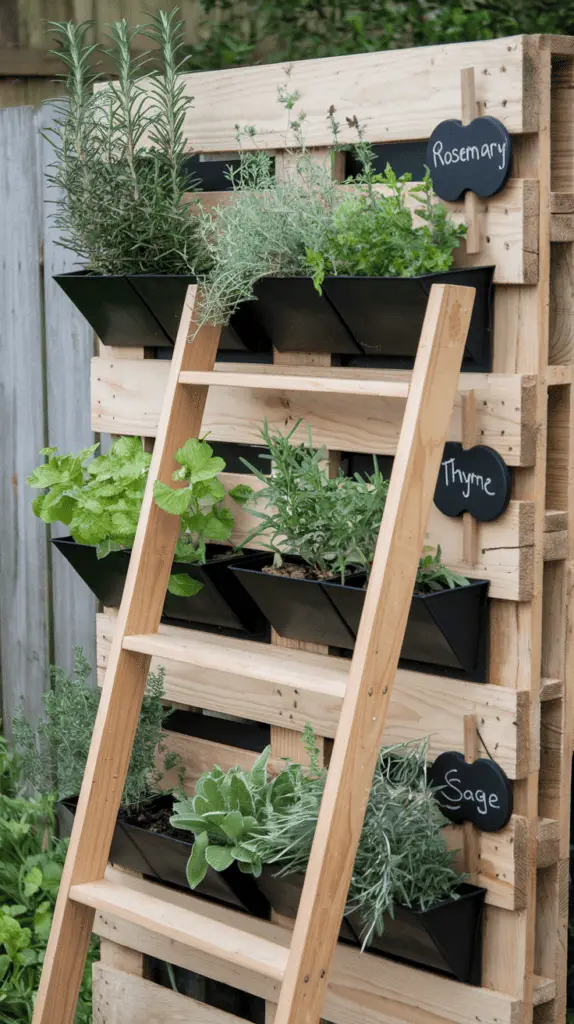
To make it even more functional, label each plant with stylish markers or small chalkboard signs. This not only adds a rustic, farmhouse feel but also makes it easier for kids to learn the names of different herbs. If you’re short on time, opt for hardy herbs like rosemary, thyme, and sage, which require minimal upkeep but deliver maximum flavor.
A vertical herb garden can also serve as a natural divider between different areas of your backyard. Place it near your outdoor kitchen or dining space for easy access, or use it as a living wall to separate play areas from lounging spots. The possibilities are endless, and the result is a backyard that feels both inviting and effortlessly functional.
6. Transform a Bare Wall into a Statement Vertical Garden
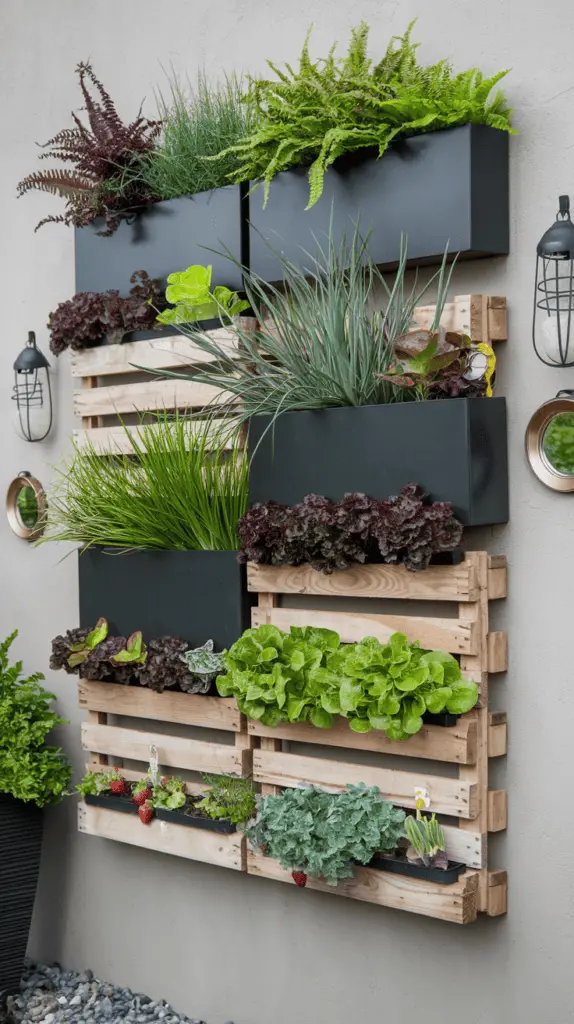
If you have a plain brick, concrete, or wooden wall in your backyard, you’re looking at prime real estate for a show-stopping vertical garden. A living wall not only softens the hard edges of your outdoor space but also adds depth, color, and texture, making it feel more like an inviting retreat rather than just an extension of your house.
To make it truly blend into your backyard design, choose plants that complement your existing aesthetic. For a modern look, go with sleek wall planters filled with structured greenery like succulents, ferns, or even ornamental grasses. If you love a lush, cottage-style feel, mix trailing vines with seasonal flowers in varying heights for a whimsical, overflowing effect.

One creative and low-cost approach is using repurposed materials. Wooden pallets, metal grids, or even hanging shoe organizers can be transformed into charming wall planters. If you’re aiming for a practical touch, create a food garden wall by growing lettuce, kale, or even strawberries. The best part? A vertical garden on a bare wall helps insulate your space, reducing heat in the summer and acting as a natural air filter.
To add personality, consider incorporating decorative outdoor elements like small mirrors to reflect light, hanging lanterns for ambiance, or even a built-in watering system to make maintenance effortless. A vertical wall garden is more than just decoration—it’s a statement piece that turns an overlooked space into the heart of your backyard design.
7. Build a DIY Vertical Garden Tower for Maximum Impact
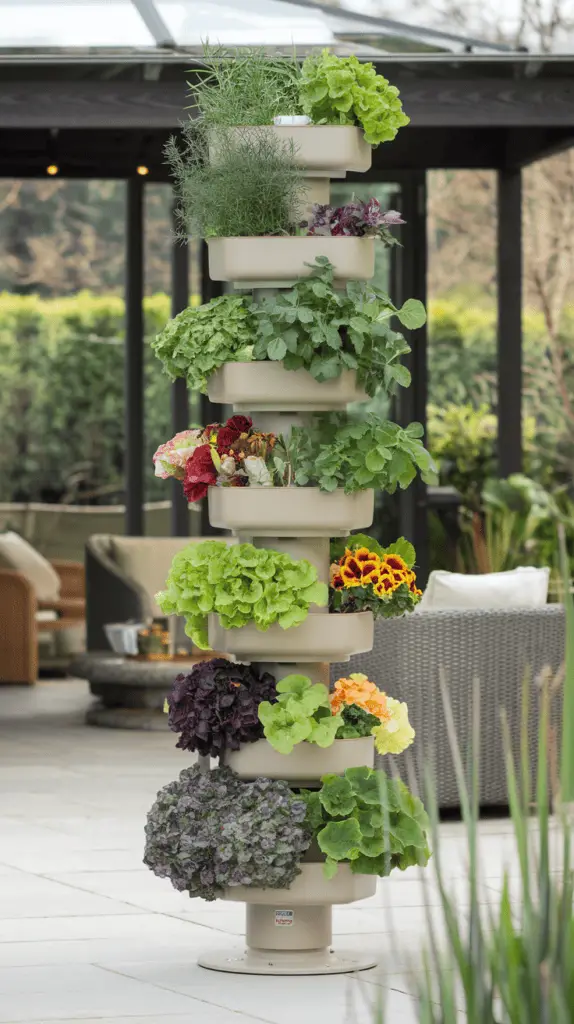
If you love the idea of a thriving green space but have limited room to work with, a vertical garden tower might be the solution. These multi-tiered structures allow you to grow a variety of plants in a small footprint while adding a dynamic element to your backyard. They’re perfect for everything from herbs and vegetables to cascading flowers and lush greenery.
A vertical tower can be as simple or as elaborate as you want. For a budget-friendly option, stack repurposed wooden crates, use a tiered plant stand, or build a DIY PVC pipe system. If you’re up for a weekend project, constructing a rotating tower garden lets you maximize sunlight exposure for each plant, ensuring healthy growth without taking up extra space.
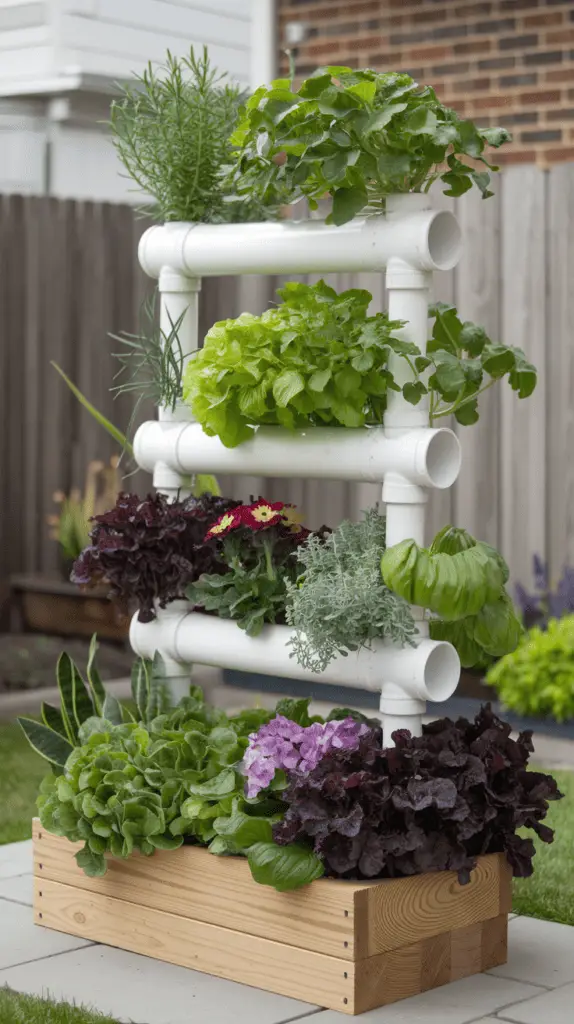
For families, this setup is a game-changer. Kids can have their own sections to care for, growing easy-to-maintain plants like radishes, spinach, or strawberries. If you’re passionate about fresh produce, you can dedicate an entire tower to a home vegetable garden, allowing you to harvest ingredients straight from your backyard to your plate.
A vertical tower not only saves space but also creates a natural focal point in your backyard. Whether you place it near your patio, in a corner of the garden, or as a centerpiece of your outdoor design, it’s an eye-catching, functional feature that brings life and vibrancy to your space.
8. Frame a Cozy Outdoor Nook with Vertical Greenery
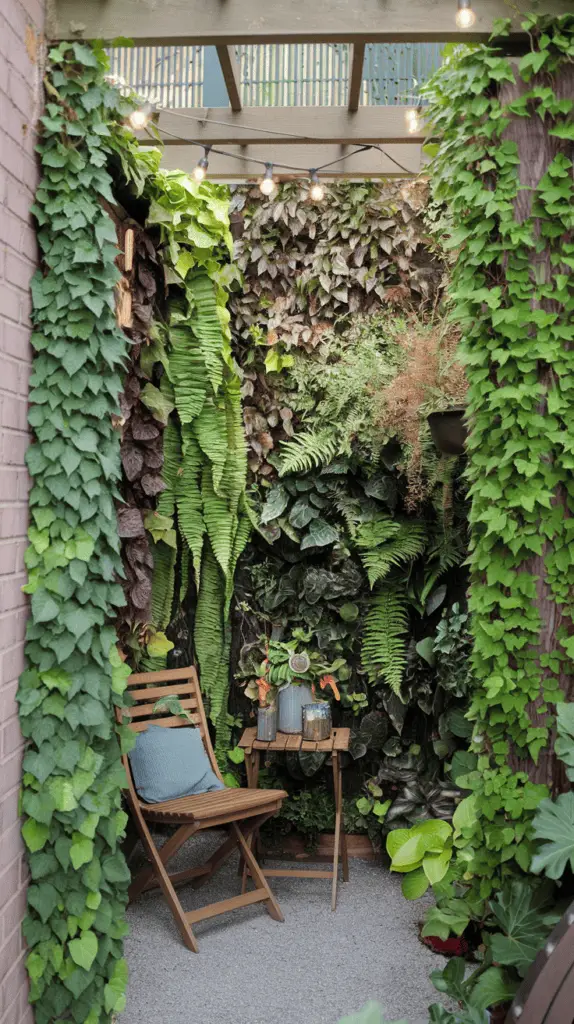
Every backyard should have a cozy retreat—a place where you can escape with a book, enjoy a quiet cup of tea, or simply soak in the beauty of your surroundings. A vertical garden can help define and enhance this space, creating a sense of intimacy while adding layers of lush greenery.

The key is to use plants that provide both privacy and beauty. Tall climbing plants like jasmine, wisteria, or climbing roses can form a natural screen, while wall-mounted planters filled with soft ferns or colorful blooms add texture and charm. For a modern touch, consider a geometric trellis with vines weaving through its openings, creating a blend of structure and softness.
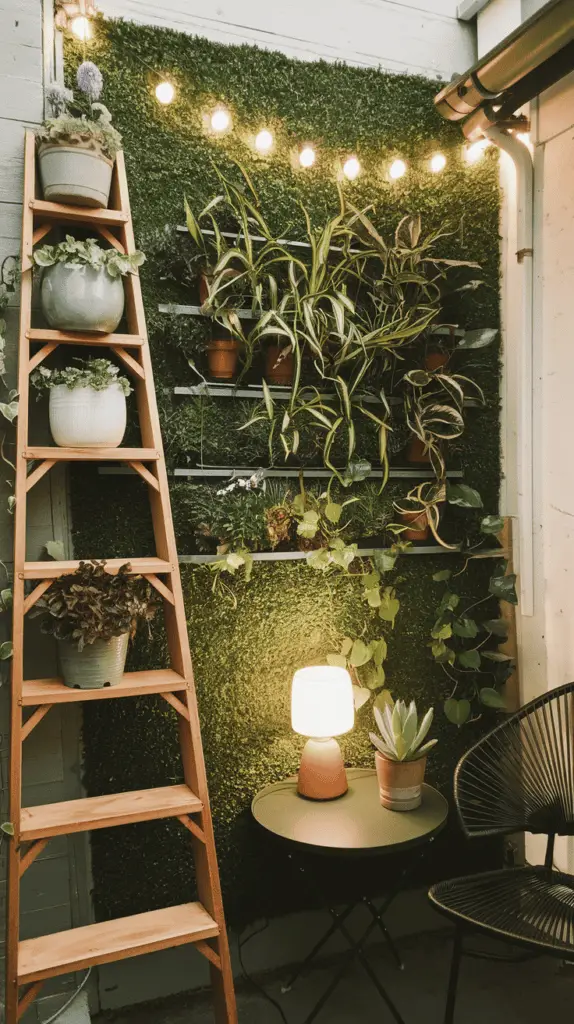
To make the space feel even more inviting, add comfortable seating, soft outdoor cushions, and warm lighting. String lights intertwined with greenery create a magical ambiance, while a small fire pit or water feature enhances the sensory experience.
This setup works beautifully in both large and small backyards. Whether it’s a corner of your patio, a dedicated reading nook, or even a small balcony, vertical greenery makes the space feel like a hidden oasis within your own home.
9. Integrate a Kid-Friendly Green Wall for Play and Learning
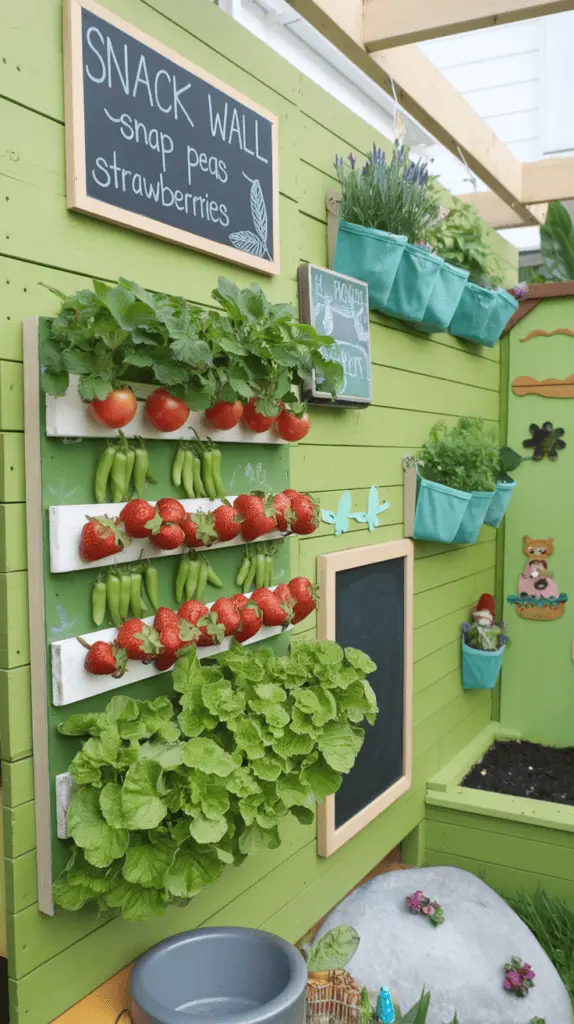
If you want your kids to be as excited about gardening as you are, creating a vertical garden just for them is a great way to spark their curiosity. A kid-friendly green wall can double as both a hands-on learning experience and an engaging outdoor feature that blends seamlessly into your family backyard.
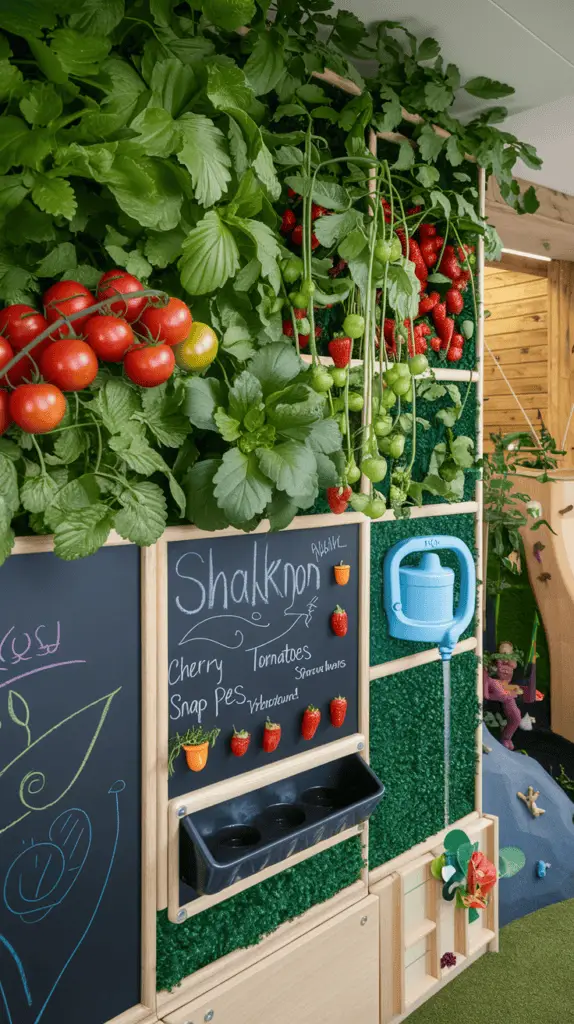
One fun idea is to create a “snack wall” filled with easy-to-pick edibles like cherry tomatoes, snap peas, or strawberries. This turns gardening into an interactive experience, where kids can grab fresh produce as they play. You can also make it more educational by adding chalkboard signs with plant names or even a small watering station where they can take care of their own mini garden.
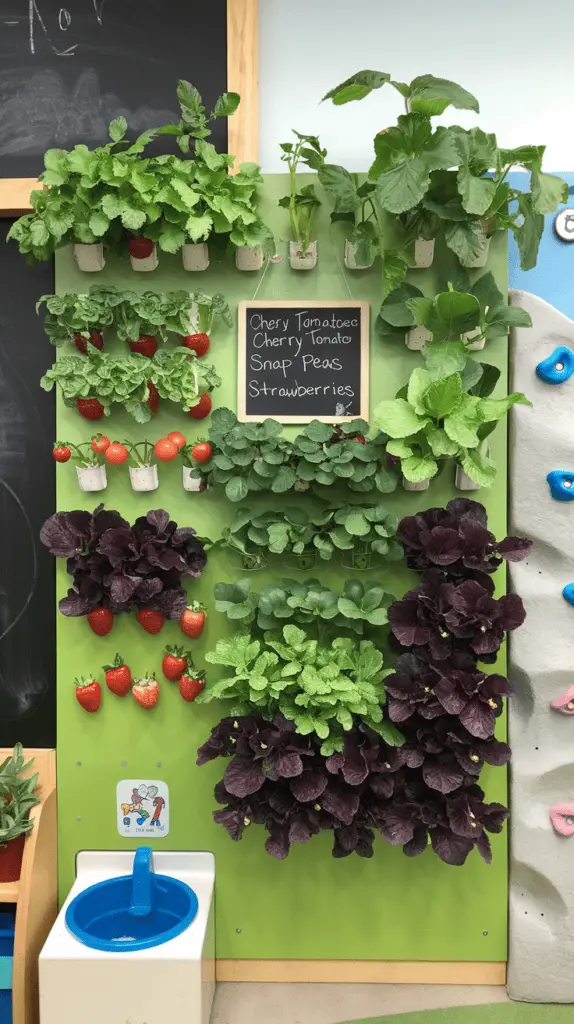
For a more playful touch, integrate a living wall with an activity area. A section with hanging pockets of herbs and flowers can sit alongside a chalkboard wall, a mini rock-climbing surface, or even a small fairy garden. This encourages creativity while keeping nature at the center of their playtime.
By designing a vertical garden with kids in mind, you create a backyard that not only looks beautiful but also nurtures a love for the outdoors. It’s a space where they can learn, explore, and engage with nature in a way that feels natural and fun.
10. Use Vertical Gardening to Create Seamless Transitions Between Spaces

A well-designed backyard should feel like a cohesive, flowing space rather than a collection of separate areas. Vertical gardens can be the perfect solution to subtly define different zones while maintaining a harmonious, natural aesthetic.
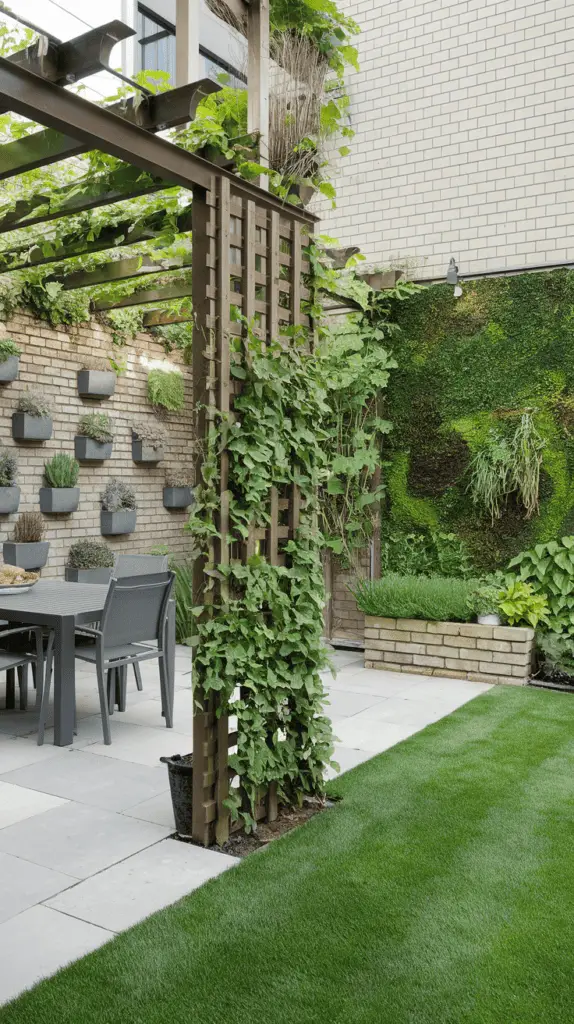
For example, if you have a patio that transitions into a grassy play area, a vertical trellis covered in climbing plants can act as a soft divider that separates the two while still keeping them visually connected. If your backyard has an outdoor dining section, a green wall filled with herbs can create a natural extension between the kitchen and outdoor eating space.
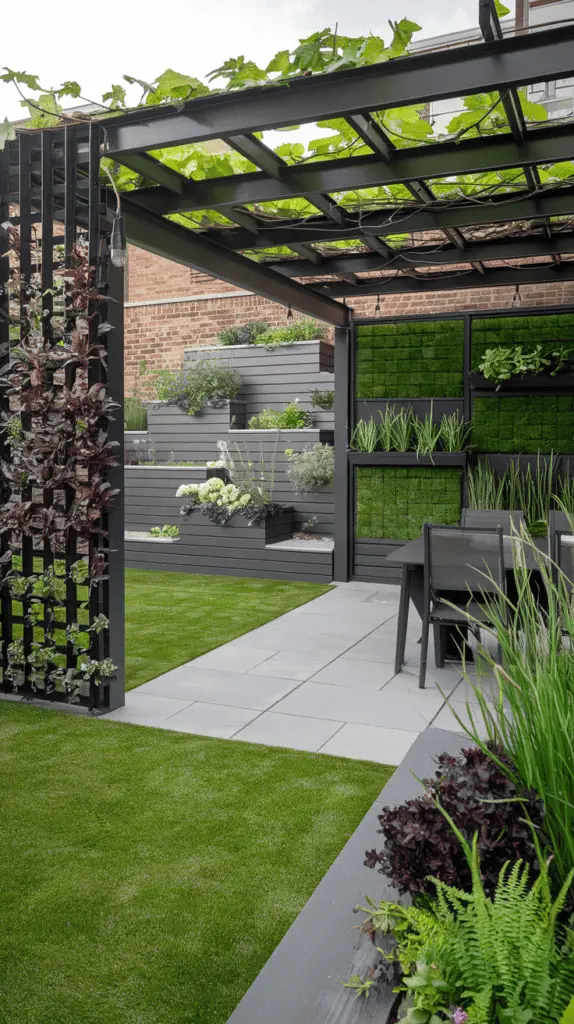
Another way to use vertical gardening for seamless transitions is by blending it into existing structures. If you have an outdoor pergola, weave vines through its beams to create a dreamy, shaded escape. If you have a brick wall, attach staggered planters filled with a mix of flowers, vegetables, and ferns to add depth and softness to the structure.
The key is to think of your backyard as an extension of your home—one that should feel just as intentional and inviting. By integrating vertical gardening into different areas, you create a space that flows naturally, feels balanced, and looks effortlessly beautiful.
Final Thoughts
A vertical garden isn’t just a trendy design choice—it’s a practical, space-saving, and visually stunning way to elevate your backyard while keeping it family-friendly. Whether you have a sprawling lawn or a compact patio, vertical gardening allows you to bring greenery into every corner without compromising functionality.
By blending vertical gardens into your backyard design, you create a space that’s not only beautiful but also engaging for the whole family. From lush living walls to edible snack gardens, cozy patio nooks to playful green walls, there are endless ways to make greenery an organic part of your outdoor space.
So why not start today? Whether you’re a seasoned gardener or a complete beginner, a vertical garden is one of the simplest ways to bring nature closer to home while enhancing the way your family enjoys the backyard. It’s time to turn your outdoor space into a dream garden that’s both practical and magical.
